Nitroaromatic compounds, from synthesis to biodegradation
- PMID: 20508249
- PMCID: PMC2884413
- DOI: 10.1128/MMBR.00006-10
Nitroaromatic compounds, from synthesis to biodegradation
Abstract
Nitroaromatic compounds are relatively rare in nature and have been introduced into the environment mainly by human activities. This important class of industrial chemicals is widely used in the synthesis of many diverse products, including dyes, polymers, pesticides, and explosives. Unfortunately, their extensive use has led to environmental contamination of soil and groundwater. The nitro group, which provides chemical and functional diversity in these molecules, also contributes to the recalcitrance of these compounds to biodegradation. The electron-withdrawing nature of the nitro group, in concert with the stability of the benzene ring, makes nitroaromatic compounds resistant to oxidative degradation. Recalcitrance is further compounded by their acute toxicity, mutagenicity, and easy reduction into carcinogenic aromatic amines. Nitroaromatic compounds are hazardous to human health and are registered on the U.S. Environmental Protection Agency's list of priority pollutants for environmental remediation. Although the majority of these compounds are synthetic in nature, microorganisms in contaminated environments have rapidly adapted to their presence by evolving new biodegradation pathways that take advantage of them as sources of carbon, nitrogen, and energy. This review provides an overview of the synthesis of both man-made and biogenic nitroaromatic compounds, the bacteria that have been identified to grow on and completely mineralize nitroaromatic compounds, and the pathways that are present in these strains. The possible evolutionary origins of the newly evolved pathways are also discussed.
Figures










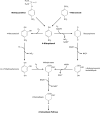
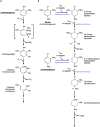
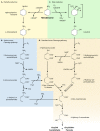

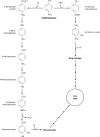
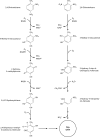
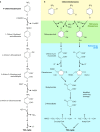
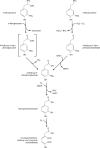


References
-
- Alid-Sadat, S., K. S. Mohan, and S. K. Walia. 1995. A novel pathway for the biodegradation of 3-nitrotoluene in Pseudomonas putida. FEMS Microbiol. Ecol. 17:169-176.
-
- Arima, K., M. Imanaka, M. Kousaka, A. Fukuda, and G. Tamura. 1964. Pyrrolnitrin, a new antibiotic substance, produced by Pseudomonas. Agric. Biol. Chem. 28:575-576.
-
- Atkinson, R., J. Arey, B. Zielinska, and S. M. Aschmann. 1987. Kinetics and products of the gas-phase reactions of OH radicants and N2O5 with naphthalene and biphenyl. Environ. Sci. Technol. 21:1014-1022. - PubMed
-
- Atkinson, R., S. M. Aschmann, J. Arey, and W. P. L. Carter. 1989. Formation of ring-retaining products from the OH radical-initiated reactions of benzene and toluene. Int. J. Chem. Kinet. 21:801-827.
-
- Ballio, A., H. Bertholdt, E. B. Chain, and V. Di Vittorio. 1962. Structure of ferroverdin. Nature 194:769-770. - PubMed
Publication types
MeSH terms
Substances
Grants and funding
LinkOut - more resources
Full Text Sources
Other Literature Sources

